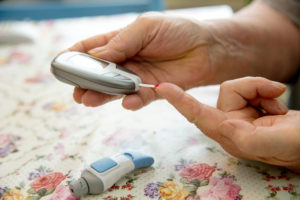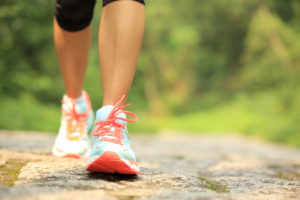
One in EIGHT American adults have Type 2 Diabetes-A largely preventable disease!
ASK MR. PEDOMETER AND FRIENDS…
November 7, 2018
Mr. Pedometer, I heard that one in ten American adults has Type 2 diabetes. Is that an exaggeration?
Actually, the truth is even worse: One in EIGHT American adults have Type 2 Diabetes which is a largely preventable disease! November is American Diabetes Month, and the Parade magazine insert in our local Sunday newspaper included the following Type 2 diabetes facts:
-
About 29 million American adults have Type 2 diabetes, which means that their bodies either don’t use insulin properly or don’t make enough of it, causing their blood glucose levels to rise.

-
The older you get, the greater your risk.
- “The American Diabetes Association (ADA) estimates that people with diabetes spend 2.3 times more on medical expenses than those without it.”
-
Sugary foods and drinks do NOT cause diabetes, but those extra calories can lead to weight gain, which increases your risk for Type 2 diabetes, according to Sacha Uelmen, RDN, director of nutrition at the ADA.
-
“You could have prediabetes and not know it. One in three Americans over age 20 – a staggering 86 million – has blood glucose (sugar) levels hovering just below the Type 2 diabetes threshold…. Prediabetes isn’t harmless: It may endanger blood vessels and cause nerve problems, says William Cefalu, M.D., chief scientific, medical, and mission officer for the ADA. (You can take the ADA risk test at doihaveprediabetes.org)
-
“You can prevent or delay its onset. If you have prediabetes, you can help reverse the disease by losing 7 percent of your body weight. For starters, eat healthfully and get at least 150 minutes per week of moderate-intensity physical activity, such as brisk walking.”
-
“Even older people can develop Type 1 diabetes. Though it’s dubbed juvenile diabetes because it typically affects children and young adults, Type 1Diabetes doesn’t discriminate based on age.” Sometimes older people are mistakenly diagnosed with Type 2 when they actually have Type 1 – meaning different medications are needed.
-
“It really hurts your heart. People with diabetes are two to four times more likely to develop cardiovascular diseases than people without diabetes, says Cefalu.”
-
“It can raise your risk for gum disease. Type 1 and Type 2 up the risk for cavities, thrush, dry mouth, and periodontitis, says diabetologist Jay Shubrook, D.O., director of diabetes services at Touro University in Vallejo, CA.”
-
“It’s bad for bones. In people with diabetes, hormones and cell products called cytokines can weaken bones, raising fracture risk, says Felicia Cosman, M.D., professor of medicine at Columbia University. Also, conditions associated with diabetes, such as neuropathy, vision problems, and low blood sugar, increase the risk of falling a breaking a bone.”
Don’t become a sad statistic! Take steps to decrease your risk of prediabetes or diabetes. Walking 10,000 steps a day will help lower your risk of Type 2 Diabetes or eliminate it if you already have it. Try wearing a pedometer. Research shows that pedometer users increase their daily steps by 26.9%. That’s 2000 extra steps a day to get you on your way to being a healthier more active you. Find the pedometer that is right for you and start walking. You will be amazed at how much better you begin to feel.
For advice on how to get started on a walking program go to Pedometer.Com. There you will find articles on how to start a walking program, tips on the correct way to walk and many articles in the Blog search about Type 2 Diabetes that will encourage you on your journey.
If you have questions, Contact Us at info@Peodmeter.com

 Cutting back on sodium (less than 2,300 mg per day) also can help reduce blood pressure.
Cutting back on sodium (less than 2,300 mg per day) also can help reduce blood pressure.